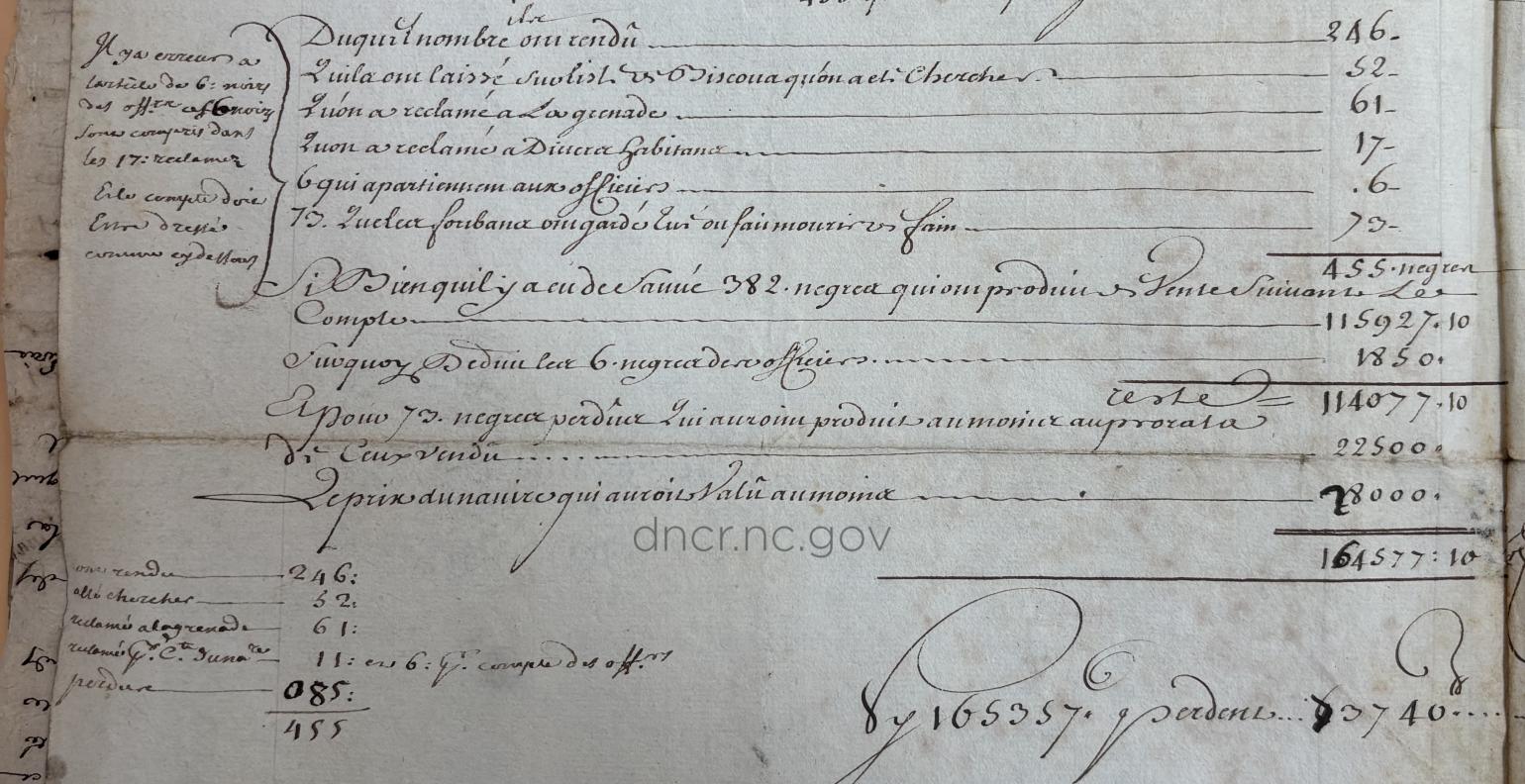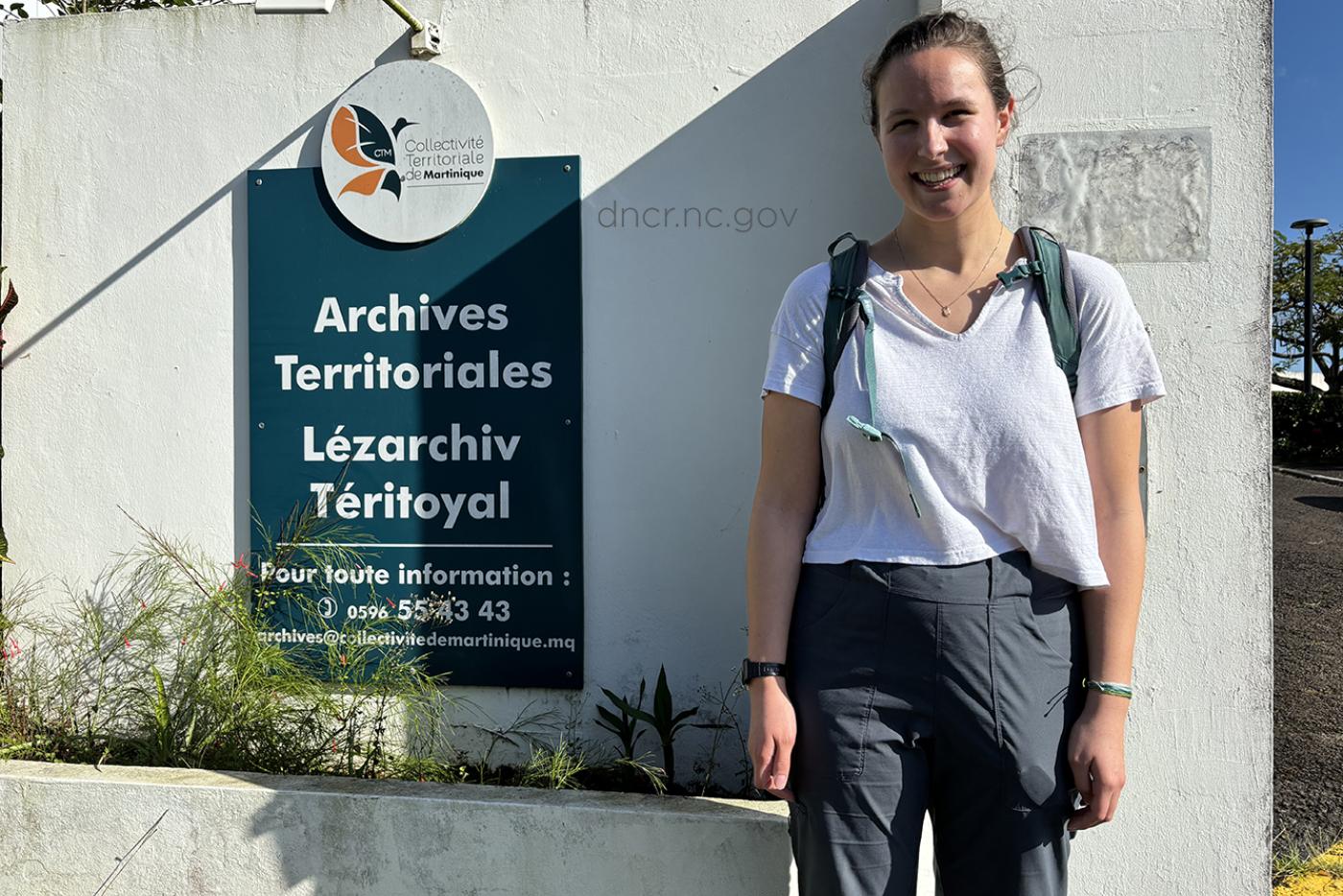Author: Jill Schuler, Research Fellow

The “Tale of Two Ships” project aims to learn more about the history of La Concorde, the French slave ship that would become Blackbeard’s flag ship Queen Anne’s Revenge. A key part of the project is archival research. During my travels, I conducted research at three archives: the Archives départementales de Loire-Atlantique in Nantes, the Archives Nationales d’Outre-mer in Aix-en-Provence, and the Archives Territoriales de Martinique in Fort-de-France. I found many historical documents that help to answer questions we have about La Concorde.
The most significant discovery during all my travels occurred on the last day at the archives in Nantes. I was going through a collection of documents about shipwrecks and piracy. I came across a document so large it had been folded in half. When I opened it, I was surprised to see La Concorde written at the top. Right next to the ship name, the document listed the captain as Pierre Dosset, and that it was a ship coming from west Africa that was taken by pirates. This was the same La Concorde!

The document was an account of the insurance claim filed by Dosset after Blackbeard took La Concorde. The account includes estimates of the cost of the vessel, the equipment, and most importantly it details what happened to the captive Africans onboard. When Blackbeard took La Concorde, he allowed the French to keep most of the captive Africans. Many of the captives were sold in the Grenadines or kept on an island called Bequia to eventually be transported to Martinique to be sold into enslavement. This insurance claim provides key information that had not been seen before about how many people were sold and where, and how many of the captive Africans Blackbeard may have kept.
At the Archives Nationales d’Outre-mer, I spent most of my time reviewing reels of microfilm. The reels contained letters to French government officials in the Caribbean that mentioned René Montaudouin and his shipping. There was one physical document that provided information about La Concorde’s 1715 slave trade voyage. The exact number of captive Africans sold during this voyage is disputed. This document provided more details on the number of men, women, and children onboard La Concorde that arrived on the island of Saint-Domingue (modern day Haiti) to be sold into enslavement.
The Archives Territoriales de Martinique are much smaller than the other archives I visited. Most of their documents date to the 19th century onwards. However, I was able to review a collection of documents copied from the Archives Nationales that relate directly to colonial activity in Martinique. One of these documents was a 1688 inventory of an habitation, or plantation, in Martinique. The inventory includes the number of enslaved who worked on the property and the names they were given. This document provides some insight on the possible experiences of these people after La Concorde brought them to Martinique.
The documents in each archive provide additional information on the lives and experiences of the 1,265 captive Africans forced aboard La Concorde over its three slaving voyages in 1713, 1715, and 1717. While they often require additional analysis and context, these are the types of documents that help us learn more about the people often overlooked in the historical narrative.
Images:
-Jill Schuler standing outside the gates of the Archives Territoriales de Martinique. A smaller archive, most of the documents date to the mid-19th century and later. Image by NC Department of Natural and Cultural Resources.
-A close-up picture of the insurance claim document located at the Archives départementales de Loire-Atlantique in Nantes. Pictured here is a numerical account of what happened to all of the captive Africans onboard. Image by NC Department of Natural and Cultural Resources.
- A microfilm reader at the Archives Nationales d’Outre-mer. Many of the documents were in the process of digitization and could only be accessed on microfilm. Image by NC Department of Natural and Cultural Resources.
“A Tale of Two Ships” is a project of the NC African American Heritage Commission executed in partnership with the Queen Anne’s Revenge Conservation Laboratory. It is funded by the NC African American Heritage Commission’s IMLS Award for MH-249108-OMS-21, “A Tale of Two Ships: Part Deux.” The project strives to uncover more about Queen Anne’s Revenge’s previous life as the slave ship La Concorde.

